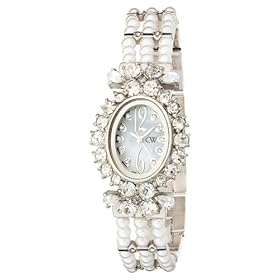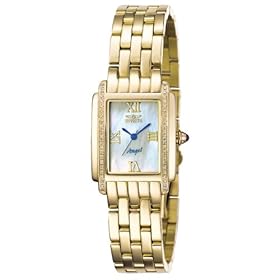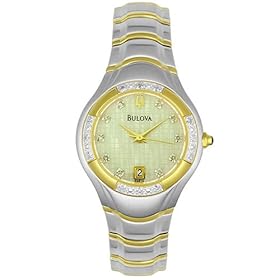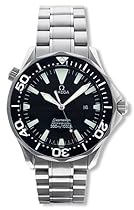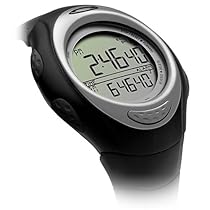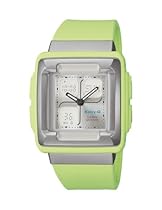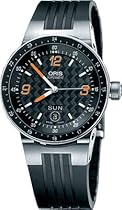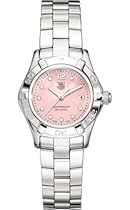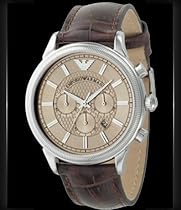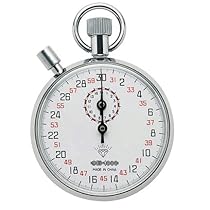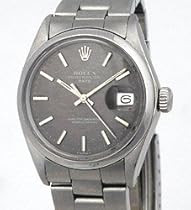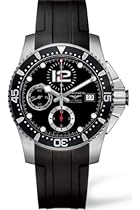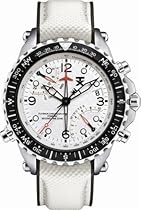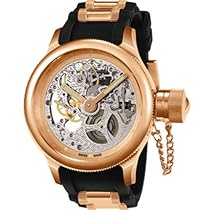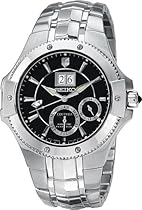Referring to the Seiko line of Kinetic watches, this innovative technology has a Quartz movement that does not use a battery. Movement of the wearer’s wrist charges a very efficient capacitor that powers the Quartz movement. Once the capacitor is fully charged, men’s models will store energy for 7-14 days without being worn and ladies’ models will store energy for 3-7 days. The watch alerts the wearer to a low capacitor charge when the second hand starts to move in two-second intervals.
Lap Memory:
Some Quartz sport watches are built with a lap memory which enables the watch to store the times of laps in a race determined by the lap timer (see “lap timer”). The wearer can recall these times on a digital display by pushing a button.
Lap Timer:
A lap timer is a chronograph function that lets the wearer time segments of a race. At the end of a lap, the wearer stops the timer, which then returns to zero in order to begin timing the next lap.
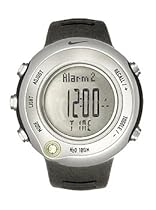
LCD Display (Liquid Crystal Display):
An LCD display shows the time electronically by means of a liquid held in a thin layer between two transparent plates. It follows from the earlier LED or Light Emitting Diode display of the first Quartz digital watches. The LCD is preferred as it uses vastly less power enabling the time to be shown constantly instead of only when pressing a display button.
Magnified Window (Cyclops):
A magnified window, also known as a cyclops, is a small window or lens in the crystal that magnifies the date two and a half times.
Manual Winding:
Manual winding refers to a watch with a manual mechanical movement, which needs to be wound by the winding crown. This motion winds the mainspring up which then releases its energy to power the watch.
Mechanical Movement:
A watch’s mechanical movement is based on a mainspring, which, slowly unwinds in a steady motion to provide accurate timekeeping. As opposed to a manual mechanical watch, which needs to be wound on a consistent basis, an automatic mechanical watch requires no winding because its rotor winds the mainspring when the wearer moves their wrist (see the section on automatic watch maintenance for more details).
Military or 24 Hour Time:
When time is measured in 24-hour segments it is called military time. To convert 12-hour time to 24-hour time, simply add 12 to any p.m. time. To convert 24-hour time to 12-hour time, subtract 12 from 13 to 24.
Mineral Crystal:
Mineral crystal is made from what is essentially a form of glass. More scratch resistant than acrylic, a mineral crystal will scratch and is extremely difficult to polish.

Moon Phase:
The moon phase is an indicator that keeps track of the phases of the moon. A regular rotation of the moon is once around the earth every 29 days, 12 hours, and 44 minutes. Once set, the moon phase indicator accurately displays the phase of the moon.
Mother-of-Pearl:
Mother-of-pearl refers to the iridescent milky interior shell of the freshwater mollusk that is sliced thin and used on watch dials. While most have a milky white luster, mother-of-pearl also comes in other colors such as silvery gray, gray blue, pink, and salmon.
Movement:
Movement refers to the means by which a watch keeps time and often includes the power source. For example, a watch with mechanical movement uses a spinning balance wheel powered by a tightly wound spring. A watch with Quartz movement measures the vibrations in a piece of Quartz and often is powered by a battery.
Pedometer:
Responding to the impact of the wearer’s steps, a pedometer counts the number of strides a wearer takes.
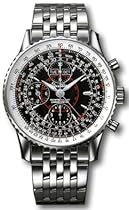
Perpetual Calendar:
A perpetual calendar adjusts automatically to account for different lengths of months (30 or 31 days) and leap years. Perpetual calendars, which can be powered by Quartz or mechanical movements, are programmed to be accurate until the year 2100.
Power Reserve Indicator:
A power reserve indicator is a feature that shows when the watch will need a new battery or winding. A battery reserve indicator on a Quartz watch informs the wearer when the battery is low. Often this is indicated by the second’s hand moving at two- or three-second intervals. Seiko’s Kinetic watches are Quartz watches that do not have a battery (see Kinetic). When a Seiko Kinetic needs to be wound, the seconds hand will also move in two-second intervals.
Power Reserve:
A power reserve measures the amount of time a watch will run after being fully powered or wound, with no additional power input. Normally, a mechanical watch that is fully wound or a Quartz watch with a new battery has a full power reserve. Many modern mechanical watches have a power reserve of 40 hours. Power reserve also applies to battery-less Quartz watches, which may have power reserves from 40 hours to 6 months. On battery-operated Quartz watches, the term power reserve is sometimes used to refer to the expected battery life–typically 12 to 32 months.
Pulsimeter:
A pulsimeter is the scale on a chronograph watch for measuring pulse rate.
Push-Piece:
The term push-piece refers to a button that is pressed to work a mechanism. Push-pieces are usually found on chronographs, striking watches, and alarms.
Quartz:
A Quartz is a caliber that uses the vibrations of a tiny crystal to maintain timing accuracy. The power comes from a battery that must be replaced about every 2-3 years. In recent years, new Quartz technology enables the watch to recharge itself without battery replacement. This power is generated via movement similar to an automatic mechanical watch, or powered by light through a solar cell(Kinetic & solar-tech).
Ratchet Bezel Ring:
A ratchet bezel ring can either turn one way (counter clockwise) or both ways and generally clicks into place.
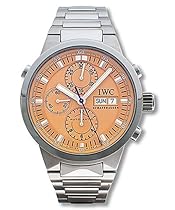
Rattrapante Chronograph:
The addition of a fly back hand (rattrapante) significantly increases the potential uses for chronographs. It makes possible the measurement of split-second times or timing simultaneous events of unequal duration.
Register:
The register is another name for a sub dial that is usually found within the watch’s main dial. An example is a chronograph where there are registers for the chronograph minutes and hours. Some watches have registers with pointers showing the day and date.
Repeater:
A repeater is a device that chimes the time when the wearer pushes a button. Some repeaters, called “quarter repeaters” sound the hours and the quarter hours by means of two different pitched tones. Others called “five minute repeaters” sound the hours, quarters, and five minute periods while “minute repeaters” sound the hours, quarters, and minutes.
Retrograde:
Retrograde is used to describe a pointer-hand on a watch dial (often called a sub dial), which returns to zero at the end of a set period. For example, a watch may have retrograde date where the hand moves up a scale, pointing to the current date - when it reaches 31 it will spring back to 1.

Rhodium Plated:
Rhodium plated is the protective coating of metal with a thin layer of rhodium. It is a hard, brittle metal that does not oxidize and is malleable only when red hot.
Rotating Bezel:
A rotating bezel (the ring surrounding the watch dial) that can be turned in order to perform different timekeeping and mathematical functions.
Rotor:
A rotor is the part of an automatic (or self-winding) mechanical watch that uses movement to wind the mainspring. It is a flat piece of metal, usually shaped like a semicircle, which swivels on a pivot with the motion of the wearer’s arm.
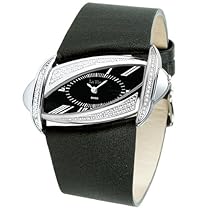
Sapphire Crystal:
Synthetically formed, the sapphire crystal of a watch is extremely scratch resistant (nine on the Moh scale) and is the material of choice for many watch collectors. The downsides are that the sapphire can chip at the edges if it protrudes and it can shatter.
Sapphlex Crystal (Seiko Watches):
Sapphlex crystal (found on Seiko watches) is a highly scratch resistant crystal created by the fusion of sapphire and mineral glass crystal.
Screw-Down Locking Crown:
A screw-down locking crown aids water resistance by sealing the crown to the case of the watch. A seal is achieved when the case locks with the crown’s internal threads and gaskets fastening the crown into its place.
Second Time Zone Indicator:
The second time zone indicator is an additional dial that can be set to another time zone. It lets the wearer keep track of local time and the time in another country simultaneously.
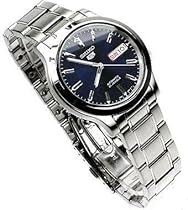
Self-Winding:
Self-winding refers to a mechanically powered watch that is wound by the motion of the wearer’s arm rather than by turning the winding stem (manual mechanical). In response to this motion, a rotor turns and winds the watch’s mainspring. Most automatic watches have up to 36 hours of power reserve. If an automatic watch is not worn for a day or two, it will need to be wound by hand to get started again.
Shock Resistance:
As defined by U.S. government regulation, shock resistance is a watch’s ability to withstand an impact equal to that of being dropped onto a wooden floor from a height of three feet.
Slide Rule Bezel:
A slide rule bezel is a rotating bezel or ring around the outside edge of the watchcase that displays a logarithmic or other scale. It is used to perform general mathematical calculations or navigational computations.

Solar Powered:
Solar powered refers to a type of Quartz movement where the batteries are recharged via solar panels on the watch dial. They have a power reserve so they can run in the dark.
Solar Tech:
Solar tech is a solar powered Quartz watch. This technology provides the accuracy of Quartz, without the inconvenience and cost of regular battery changes.
Split Second:
A split second is a feature on a chronograph that is two hands: one is a fly back and the other is a regular hand. In order to time laps or different finishing times, the wearer can stop the fly back hand independently while the regular hand keeps moving.
Stainless Steel:
Stainless steel is an extremely durable metal alloy (chromium is a main ingredient) that is virtually immune to rust, discoloration, and corrosion. It can be highly polished, thus resembling a precious metal. Stainless steel is often used on the backs of watchcases that are made of other metals. A metal of choice, stainless steel is used to make high quality watchcases and bracelets. It is also hypoallergenic because it doesn’t contain nickel.
Sterling Silver:
Sterling silver, a precious metal, refers to silver that is 92.5 percent pure. The silver fineness should be stamped on the metal, sometimes accompanied by the initials of a designer or the country of origin as a hallmark. A protective coating may be added to prevent tarnishing.
Stopwatch:
A stopwatch with a second hand measures intervals of time. When a stopwatch is incorporated into a standard watch, both the stopwatch function and the timepiece are referred to as a “chronograph.”
Sub dial:
A sub dial is a small dial used for several purposes, such as keeping track of elapsed minutes or hours on a chronograph, or to indicate the date.
Swiss A.O.S.C. (Certificate of Origin):
The Swiss A.O.S.C. is a mark identifying a watch that is assembled in Switzerland with components of Swiss origin. It is primarily used in Bedat watches.
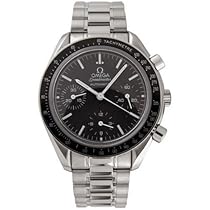 Tachometer (Tachymeter):
Tachometer (Tachymeter):
A tachometer is an instrument for measuring speed or units. In watch making, a timer or chronograph with a graduated dial shows speed in kilometers per hour or some other unit (see timer).
Tank Watch:
A tank watch is a rectangular watch with heavier bars on either side of the dial. It was inspired by the tank tracks of World War I and was first created by Louis Cartier.
Tantalum:
Tantalum is a metal with a texture similar to titanium, but a color similar to gold. This metal is used by Omega for the gold-like trim on certain titanium watches. Many of these watches are also available in titanium with real gold trim.
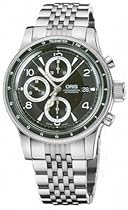
Telemeter:
A telemeter is a watch function that finds the distance of an object from the wearer by measuring how long it takes sound to travel that distance. Like a tachometer, a telemeter consists of a stopwatch function and a special indication on the dial of a chronograph.
Timer:
A timer is an instrument used for registering intervals of time without displaying the time of day.
Titanium:
Titanium is a “space age” metal, often having a silver-gray appearance. Because it is 30 percent stronger and nearly 50 percent lighter than steel, it has been increasingly used in watch making, especially sport watch styles. Its resistance to salt water corrosion makes it particularly useful in divers’ watches. Since it can be scratched easily, some manufacturers use a patented, scratch-resistant coating. Titanium is also hypoallergenic.
Tonneau Watch:
A tonneau watch has a barrel-shaped watchcase and two convex sides.
Totalizer:
A totalizer is a mechanism that keeps track of elapsed time and displays it usually on the watch’s sub dial. It is sometimes called a “recorder” or “register.” The term “totalizer” can be used more generally to refer to any counter on a watch.
Unidirectional Rotating Bezel:
The unidirectional rotating bezel, or an elapsed time rotating bezel, moves only in a counterclockwise direction and is often found on divers’ watches. It is designed to prevent divers from overestimating their remaining air supply. Because the bezel only moves in one direction, the diver can err only on the side of safety when timing the dive. Many such bezels are ratcheted, so that they lock into place for greater safety.
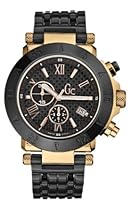
Water Resistance:
Water resistance describes the level of protection a watch has from water damage.
Waterproof:
Waterproof means the ability to completely exclude the possibility of water entering into any working portion of a watch. According to the Federal Trade Commission, no watch is fully 100 percent waterproof and no manufacturer that sells watches in the U.S. may label any of their watches as “waterproof.” The FTC stipulates that watches be referred to as “water resistant.”
Winding Stem:
The winding stem button resides on the right side of the watchcase and is used to wind the mainspring; it is also called a “crown.”
Winding:
Winding refers to the tightening of the watch’s mainspring. This can be done by hand (by the crown) or automatically (by a rotor, which swings due to movements from the wearer’s arm).

World Time Dial:
A world time dial, usually found on the outer edge of the watch face, tells the time in up to 24 time zones around the world. The time zones are represented by the names of cities printed on the bezel or dial. The hour hand points to a city along a set scale enabling the wearer to determine the time zone.. Watches with this feature are called “world timers.”
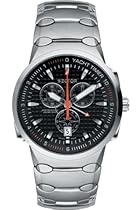
Yacht Timer:
A timer that sounds warning signals during the countdown.
Visit Discount Watch Store
Visit HotBoxSave dot com

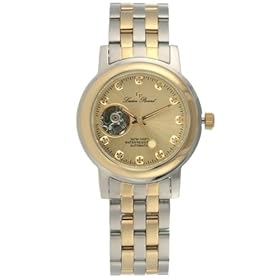

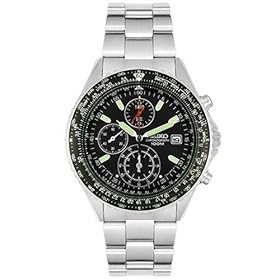 This impressive, features-packed pilot's watch from Seiko is a sophisticated blend of function and style. The solid steel case and bracelet highlight a round black dial with luminous hands and markers, a red sweep seconds hand, and a date display at the three o'clock hour. Three chronograph subdials register up to 60 minutes of elapsed time in 1/10 second increments. The dial is capped with a highly scratch-resistant Hardlex crystal and framed by a matching black bi-directional rotating bezel with a rotary compass and a slide rule for rapid calculations and conversions, including multiplication, division, speed, distance, fuel consumption rate, and fuel conversions. Other notable features of this watch include precise quartz movement and a screw-down locking crown. This Seiko watch is rated water resistant to 100 meters.
This impressive, features-packed pilot's watch from Seiko is a sophisticated blend of function and style. The solid steel case and bracelet highlight a round black dial with luminous hands and markers, a red sweep seconds hand, and a date display at the three o'clock hour. Three chronograph subdials register up to 60 minutes of elapsed time in 1/10 second increments. The dial is capped with a highly scratch-resistant Hardlex crystal and framed by a matching black bi-directional rotating bezel with a rotary compass and a slide rule for rapid calculations and conversions, including multiplication, division, speed, distance, fuel consumption rate, and fuel conversions. Other notable features of this watch include precise quartz movement and a screw-down locking crown. This Seiko watch is rated water resistant to 100 meters.  Whether you’re a pilot or you simply want a high-performance, features-packed timepiece, this flight chronograph watch is sure to please. It has a round black dial, with luminous markers and large luminous hands, set in a coin-edged stainless steel bezel. The watch features a date window at the three o’clock position and three sub-dials. Its stopwatch feature can measure up to sixty minutes in 1/5-second increments. The alarm, a two-hand sub-dial, can be set on a twelve-hour basis, and it doubles as an international travel clock since the alarm hands can be set to indicate the time in a different time zone. This watch also has a bi-directional rotating slide rule bezel for performing many types of calculations. Other features include a scratch-resistant curved Hardlex crystal and a screw-down crown and caseback. The watch is presented on a stainless steel link bracelet that fastens with fold-over push button clasp. Water-tested to 200 meters, the watch is suitable for skin diving. It has a battery life of two to three years.
Whether you’re a pilot or you simply want a high-performance, features-packed timepiece, this flight chronograph watch is sure to please. It has a round black dial, with luminous markers and large luminous hands, set in a coin-edged stainless steel bezel. The watch features a date window at the three o’clock position and three sub-dials. Its stopwatch feature can measure up to sixty minutes in 1/5-second increments. The alarm, a two-hand sub-dial, can be set on a twelve-hour basis, and it doubles as an international travel clock since the alarm hands can be set to indicate the time in a different time zone. This watch also has a bi-directional rotating slide rule bezel for performing many types of calculations. Other features include a scratch-resistant curved Hardlex crystal and a screw-down crown and caseback. The watch is presented on a stainless steel link bracelet that fastens with fold-over push button clasp. Water-tested to 200 meters, the watch is suitable for skin diving. It has a battery life of two to three years. 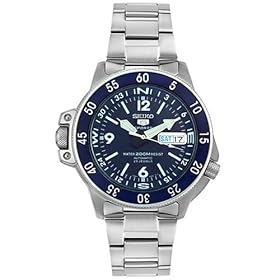 Seiko Men's SKZ209 Seiko 5 Atlas Collection. Precise 23 Jewels Self-winding automatic movement. Stainless steel case and bracelet. Blue Dial with White hands and hour markers. Luminous hands and markers. Rotating bezel. Day and Date. Screw-down main crown. Crown on left side rotates direction inner bezel. Push-button Fold-over deployment clasp. Water resistant to 200m. Scratch resistant hardlex crystal. Case measures 43mm diameter by 14mm thick. 3 years original manufacturer warranty SKZ209 Seiko 5 Sports Automatic Atlas Diver White Hands Dark Blue Dial Watch.
Seiko Men's SKZ209 Seiko 5 Atlas Collection. Precise 23 Jewels Self-winding automatic movement. Stainless steel case and bracelet. Blue Dial with White hands and hour markers. Luminous hands and markers. Rotating bezel. Day and Date. Screw-down main crown. Crown on left side rotates direction inner bezel. Push-button Fold-over deployment clasp. Water resistant to 200m. Scratch resistant hardlex crystal. Case measures 43mm diameter by 14mm thick. 3 years original manufacturer warranty SKZ209 Seiko 5 Sports Automatic Atlas Diver White Hands Dark Blue Dial Watch.  Blending classic timepiece design with refined European style, this Omega Constellation men's chronometer automatic watch is comfortably at home in both the boardroom as well as the baccarat table. This fully silver watch offers an appealing balance of luxury, durability, and precision (with its Swiss quartz watch movement). Its brushed stainless steel case is topped by a slightly raised bezel that features engraved Roman numerals in black and curved claw accents at 3 and 9 o'clock. The stainless steel bracelet band flows seamlessly from the case and is slightly tapered. It's composed of alternating wide links and contrasting thin bands, and is joined by a secure push-button safety clasp. The silvery white dial background also includes silver-tone Dauphine hands (with seconds hand) and baton dial markers as well as a window at 3 o'clock for the automatic date display. Other features include a scratch-resistant and glare-proofed domed sapphire crystal, a distinctive Cabochon crown, and water resistance to 50 meters (165 feet) The watch case measures 35.5mm (1.4 inches) across and 10mm (0.39 inches) deep.
Blending classic timepiece design with refined European style, this Omega Constellation men's chronometer automatic watch is comfortably at home in both the boardroom as well as the baccarat table. This fully silver watch offers an appealing balance of luxury, durability, and precision (with its Swiss quartz watch movement). Its brushed stainless steel case is topped by a slightly raised bezel that features engraved Roman numerals in black and curved claw accents at 3 and 9 o'clock. The stainless steel bracelet band flows seamlessly from the case and is slightly tapered. It's composed of alternating wide links and contrasting thin bands, and is joined by a secure push-button safety clasp. The silvery white dial background also includes silver-tone Dauphine hands (with seconds hand) and baton dial markers as well as a window at 3 o'clock for the automatic date display. Other features include a scratch-resistant and glare-proofed domed sapphire crystal, a distinctive Cabochon crown, and water resistance to 50 meters (165 feet) The watch case measures 35.5mm (1.4 inches) across and 10mm (0.39 inches) deep. 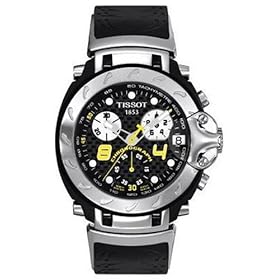 Dial window material type: Scratch Resistant Sapphire Crystal, Clasp: Deployant Clasp, Case material: stainless-steel, Case diameter: 43 millimeters, Case Thickness: 12 millimeters, Band material: Rubber, Band length: mens-standard, Dial color: Black Carbon Fiber Dial with Luminous Hands, Bezel material: stainless-steel, Calendar: Date display at 3 o'clock, Movement: Swiss Quartz, Water resistant depth: 330 Feet, Warranty Type: 2 Year Limited Warranty.
Dial window material type: Scratch Resistant Sapphire Crystal, Clasp: Deployant Clasp, Case material: stainless-steel, Case diameter: 43 millimeters, Case Thickness: 12 millimeters, Band material: Rubber, Band length: mens-standard, Dial color: Black Carbon Fiber Dial with Luminous Hands, Bezel material: stainless-steel, Calendar: Date display at 3 o'clock, Movement: Swiss Quartz, Water resistant depth: 330 Feet, Warranty Type: 2 Year Limited Warranty. 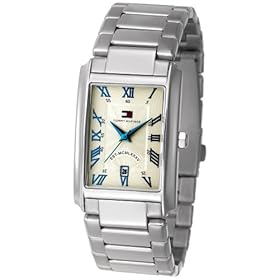 Dial window material type: Mineral, Clasp: fold-over-push-button-clasp, Case material: stainless-steel Case diameter: 31.49 millimeters, Case Thickness: 8.99 millimeters, Band material: stainless-steel, Band length: mens-standard, Band width: 23.02 millimeters, Dial color: ivory, Bezel material: stainless-steel, Bezel Function: stationary, Calendar: Date, Movement: japanese-quartz, Water resistant depth: 99 Feet.
Dial window material type: Mineral, Clasp: fold-over-push-button-clasp, Case material: stainless-steel Case diameter: 31.49 millimeters, Case Thickness: 8.99 millimeters, Band material: stainless-steel, Band length: mens-standard, Band width: 23.02 millimeters, Dial color: ivory, Bezel material: stainless-steel, Bezel Function: stationary, Calendar: Date, Movement: japanese-quartz, Water resistant depth: 99 Feet. 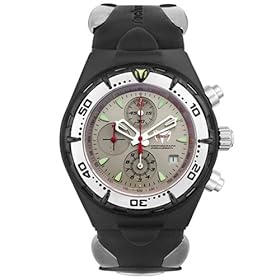 A great choice for sporty gents who like to wear their weekends on their wrists, the Technomarine Squale stainless steel chronograph features a black gel cover to protect it from scratched during even the roughest play. The black gel strap also includes strengthening stainless steel inserts. This large, round watch is topped by a unidirectional rotating silver bezel with black elapsed time markings. The silver dial features three darker silver chrono subdials (which can measure to 1/20 of a second), luminous triangular markers, oversized skeleton hands (with seconds hand), and a date window at 4 o'clock. Other features include a scratch-resistant mineral crystal and water resistance to 200 meters (660 feet)--enabling it to stand up to the rigors of recreational scuba diving.
A great choice for sporty gents who like to wear their weekends on their wrists, the Technomarine Squale stainless steel chronograph features a black gel cover to protect it from scratched during even the roughest play. The black gel strap also includes strengthening stainless steel inserts. This large, round watch is topped by a unidirectional rotating silver bezel with black elapsed time markings. The silver dial features three darker silver chrono subdials (which can measure to 1/20 of a second), luminous triangular markers, oversized skeleton hands (with seconds hand), and a date window at 4 o'clock. Other features include a scratch-resistant mineral crystal and water resistance to 200 meters (660 feet)--enabling it to stand up to the rigors of recreational scuba diving. 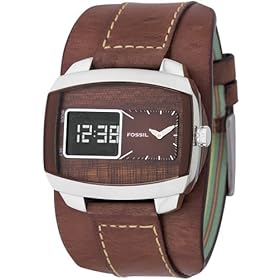 A sporty, rustic style creates a distinctive timepiece you'll love. Brown leather strap and stainless steel rectangular case. Anadigital brown wood dial features multifunction dial with black display on one side and two-hand movement on the other. Quartz movement. Water resistant to 50 meters. Eleven-year limited warranty. Comes packaged in a collectible tin.
A sporty, rustic style creates a distinctive timepiece you'll love. Brown leather strap and stainless steel rectangular case. Anadigital brown wood dial features multifunction dial with black display on one side and two-hand movement on the other. Quartz movement. Water resistant to 50 meters. Eleven-year limited warranty. Comes packaged in a collectible tin. 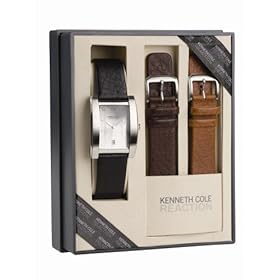 Dial window material type: Mineral, Clasp: Buckle, Case material: stainless-steel, Case diameter: 33.3 millimeters, Case Thickness: 10.5 millimeters, Band material: Leather, Band length: mens, Band width: 19.7 millimeters, Dial color: gray, Bezel material: stainless-steel, Bezel Function: stationary, Movement: analog-quartz, Water resistant depth: 100 Feet.
Dial window material type: Mineral, Clasp: Buckle, Case material: stainless-steel, Case diameter: 33.3 millimeters, Case Thickness: 10.5 millimeters, Band material: Leather, Band length: mens, Band width: 19.7 millimeters, Dial color: gray, Bezel material: stainless-steel, Bezel Function: stationary, Movement: analog-quartz, Water resistant depth: 100 Feet. 
